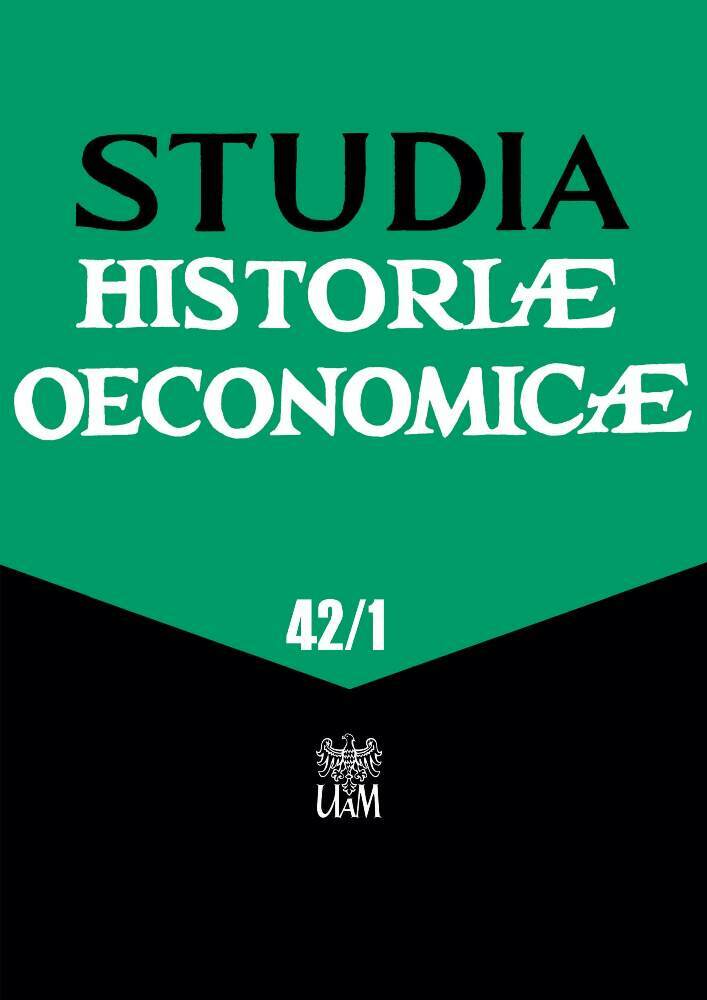Abstract
The problem of interaction between man and nature throughout history is, relatively, rarely addressed by classical historiography. The session entitled Man and Nature: Between destruction and creation, organized and chaired by Prof. Tadeusz Janicki (Faculty of History, UAM, Poznań, Poland) and Prof. Dariusz J. Gwiazdowicz (Department of Forest Protection, Poznań University of Life Sciences, Poland) on 24 August 2022 as part of the XXIII International Congress of Historical Sciences Poznań 2022, was an attempt to change this tendency and broaden the existing research perspective. The papers delivered during the occassion were the starting point for the preparation of a special issue of the journal Studia Historiae Oeconomicae (SHO), the primary purpose of which is interdisciplinary reflection by specialists from various scientific disciplines on the problem of destruction of natural landscapes and creation of cultural landscapes, along with other issues concerning the interaction between humans and the natural environment from prehistoric times to the present.
This special issue of SHO consists of seven articles on diverse topics, analysing human interactions with nature through different historical periods, meanwhile taking into account their economic, civil, social and climatic conditions. The result is a multifaceted mosaic of topics that constitutes an original and interdisciplinary analysis of man’s relationship with nature, which may be a source of inspiration for readers and perhaps further research in this field.
References
Benincasa, Z. (2024) ‘“Itaque tam istud vitandum habebit quam hercule fugiendum venandi aut aucupandi studium, quibus rebus plurimae operae avocantur”’, Studia Historiae Oeconomicae, 42(1), pp. 37–62. DOI: https://doi.org/10.14746/sho.2024.42.1.004
Daszkiewicz, P. (2024) ‘Reintroductions of forest fauna in the Second Polish Republic (1918–1939’, Studia Historiae Oeconomicae, 42(1), pp. 113–124. DOI: https://doi.org/10.14746/sho.2024.42.1.007
Hojka, Z. (2024) ‘Springs of Life. Spas in Western Galicia from the beginning of the 19th century to the outbreak of World War I’, Studia Historiae Oeconomicae, 42(1), pp. 73–112. DOI: https://doi.org/10.14746/sho.2024.42.1.006
Ilski, K. and Kotłowska, A. (2024) ‘Soil degradation as a matter of concern for Plato. A few notes in the margin of Critias (110–112, ed. Burnet)’, Studia Historiae Oeconomicae, 42(1), pp. 63–72. DOI: https://doi.org/10.1080/09503110.2023.2292910
Janicki, T. (2024) ‘Agriculture and the environment in Poland after 1945’, Studia Historiae Oeconomicae, 42(1), pp. 125–144. DOI: https://doi.org/10.14746/sho.2024.42.1.008
Koike, T., Koike, T. and Ueda, H. (2024) ‘Forest Aesthetics as a basic idea for forest management from the Perspectives of Light Quality, Ecosystems, and Sustainability in Japan’. Studia Historiae Oeconomicae, 42(1), pp. 21–36. DOI: https://doi.org/10.14746/sho.2024.42.1.003
Küster, H. (2024) ‘Different forms of civilizations and the development of woodlands: systems of interactions’, Studia Historiae Oeconomicae, 42(1), pp. 13–20. DOI: https://doi.org/10.14746/sho.2024.42.1.002
License
Copyright (c) 2024 Dariusz J. Gwiazdowicz, Tadeusz Janicki

This work is licensed under a Creative Commons Attribution-ShareAlike 4.0 International License.





